Queensland, and much of the East Coast, is covered in gem bearing areas and we took the opportunity to avail ourselves of the local Lava Plains field to fossick for Sapphires and the Mt Gibson field to fossick for Topaz. The fossicking fields themselves are very different, as was the amount of effort expended and the results obtained.
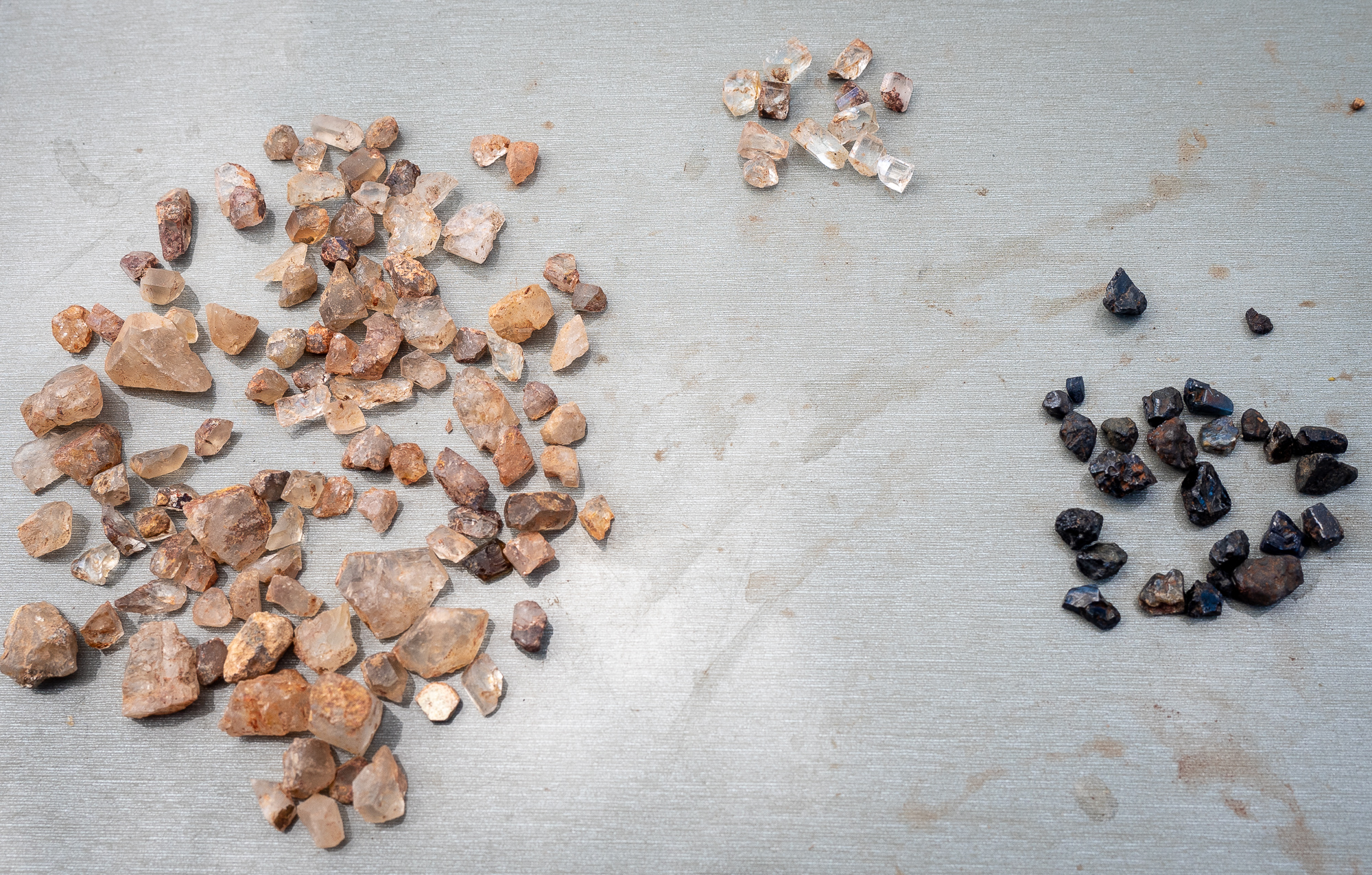
<< Photo credit: Tony – Our results for about 12hrs of fossicking. Left we have the clear Quartz Crystal and some pieces of Topaz, with top middle being what we think is definitely Topaz from Mt Gibson, and right being our Sapphires and Corundrum from the Lava Plains field. >>
First up, the Lava Plains Sapphire fossicking field, approximately 50kms south of the Pinnarendi Station, where we’re staying. You need to park on the side of the road, enter the field via a turnstile and then walk about 1.5km, down to the creek and the old diggings. Not knowing what to expect, or how to fossick for Sapphires, we carried in a shovel, pick, sieves, buckets and 40ltrs of water, which for the astute of you you’ll know equates to 40kg of water….. Suffice to say, it took us a while to lug the gear in and we were fairly buggered before we’d even started digging!
On arrival at the Southern Gully of Mine Hill, and the old diggings, Rod and I then spent the next 2hrs fruitlessly digging holes in random locations, only to turn up lots of rock hard clay. And I’m not exaggerating when we say ROCK HARD CLAY… We applied the same technique here as we used at Gemtree for Zircons and this resulted in us turning spades full of the rock like clay, into mud…. No matter how hard we broke the clay up, it always seemed to end up washing through the sieves, turning into a thick mud slurry in the bottom of our laboriously lugged buckets of water. Luckily our salvation was at hand, when an old timer, Don and his wife arrived, and after some sweet talking, he was very obliging and showed us how to get the Sapphires. Prior to Don’s arrival and tips, we’d basically been expending 320% too much effort trying to break up all the mud, whereas he simply broke it into smallish pieces and dry sieved it before flipping it onto his (carried in) old ironing table and sorting through it for the rocks that had a shine or a faceted edge showing. He started finding them straight away, however, they were very small, catching most of them in his 4mm sieve (our sieve was 6mm). By the time we left, Don had a couple of dozen, whereas we only have 6 confirmed, small, Sapphires. Six bloody Sapphires in nearly 5hrs of hard yakka.. Certainly no millions to be made there. Rod and I did return a couple days later to apply our new found skills and knowledge. This time, we met another couple of guys who were out there to make a living from the Sapphire, which he advised sold for around $1000/carat (1 carat is 0.2gms, e.g. too fitths of f#ck all), when cut. The older bloke was a real character, and after we’d managed to befriend him and his 13 dogs, yep, you heard right, 13 dogs, he was really talkative and gave us some more tips. They had somehow managed to drive right into the sight, which is not permitted and we’re not sure how they got in, but as they had, they had all their gear with them and were able to process a lot more dirt than us, thus resulting in a lot more gems, some of which were reasonably large, say 15mm longest side, and a very beautiful royal blue in colour. Rod and I tried the Northern Gully this time, but didn’t find a thing, surmising in the end that the whole area, and I mean WHOLE area, had been commercially mined sometime in the past. We ended up back at the Southern Gully with old mate and his dogs, and managed to dig up another 5 or so Sapphires, as well some blacker Corundum which old mate says he and his son heat treat at >1500C, to finish the ‘baking process’, turning blackish Corundum into blue Sapphire.
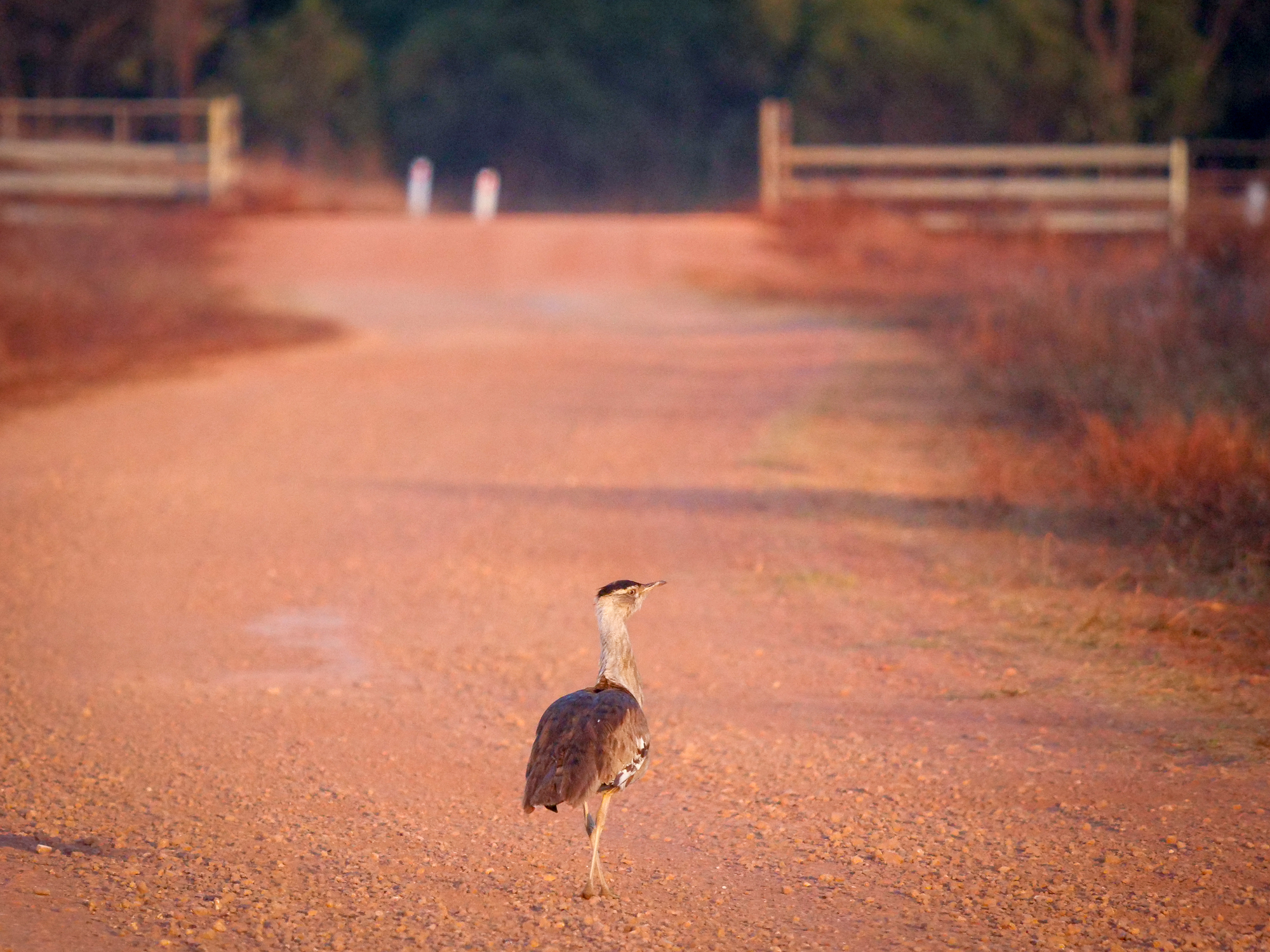
<< Photo credit: Rod – An Australian Bustard, which in Latin we’re told means “Bird big of size but small of brain”, strolling down the Pinnarendi Station driveway >>
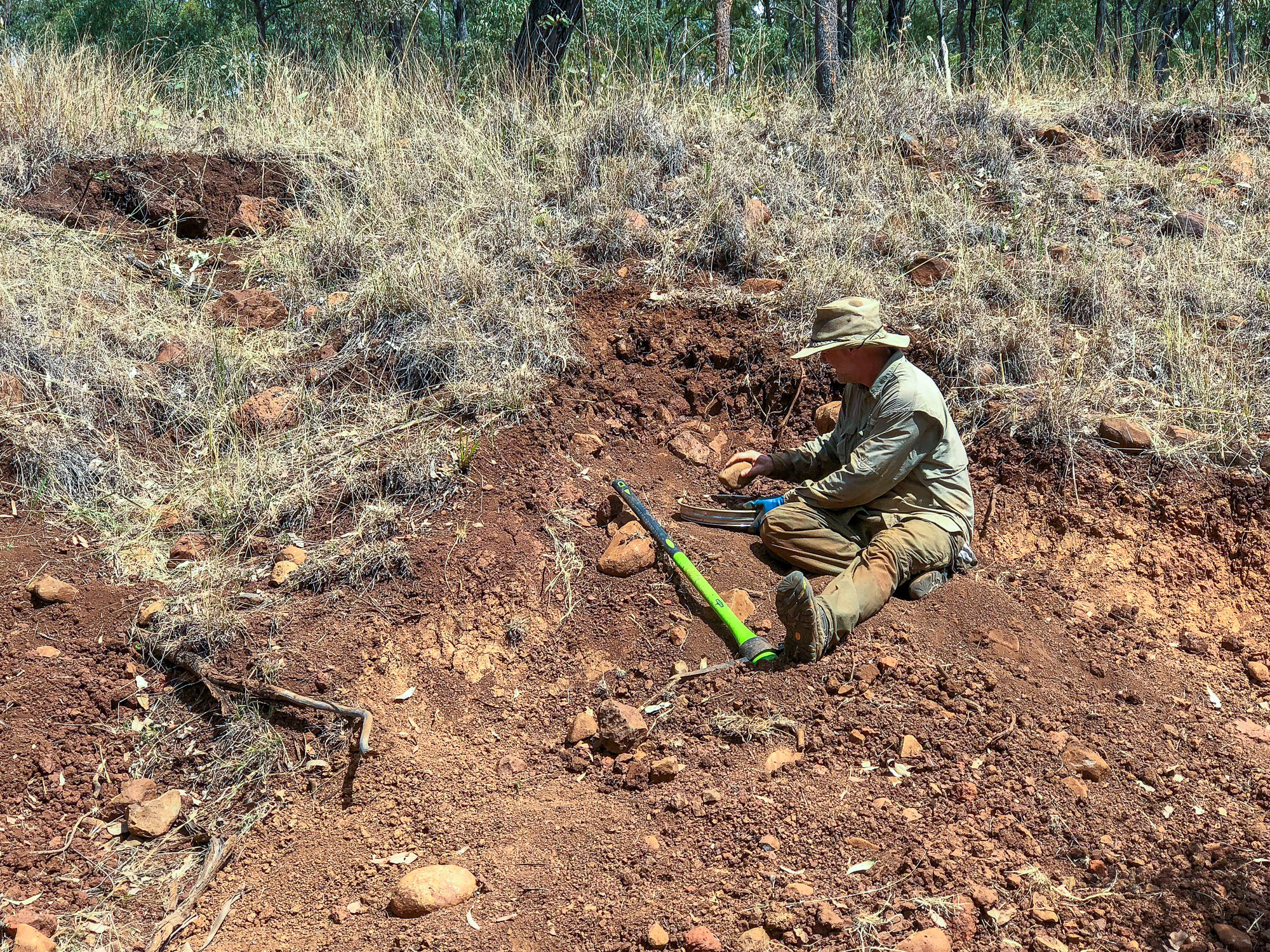
<< Photo credit: Jeff – Me, trying to brake up the rock hard clay with a large rock. You’ll note a theme in these pics, the theme being that they’re nearly all of me doing all the bloody hard work! >>
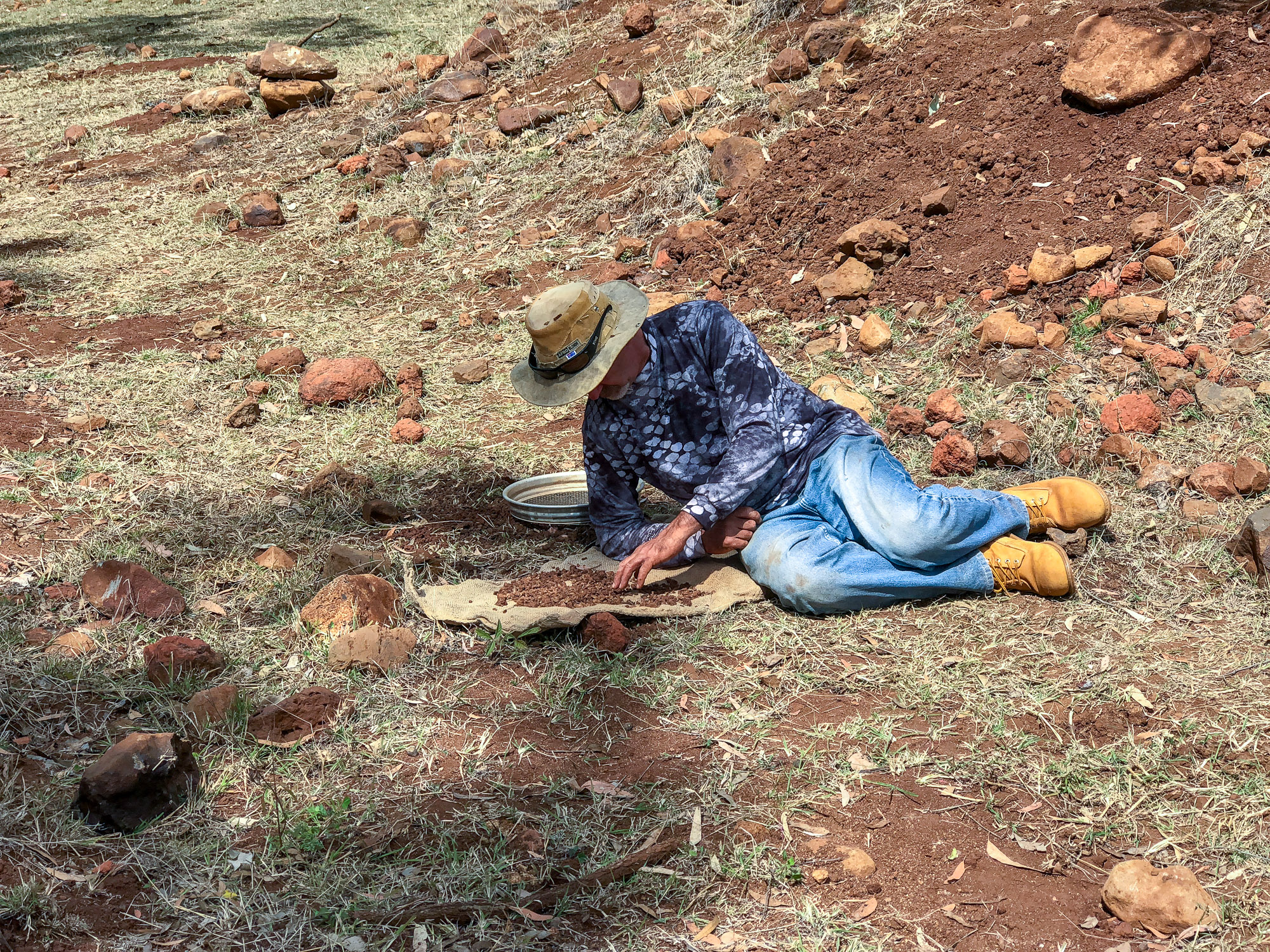
<< Photo credit: Jeff – Rod, laying down on the job, searching for Sapphires in the sieved dirt >>
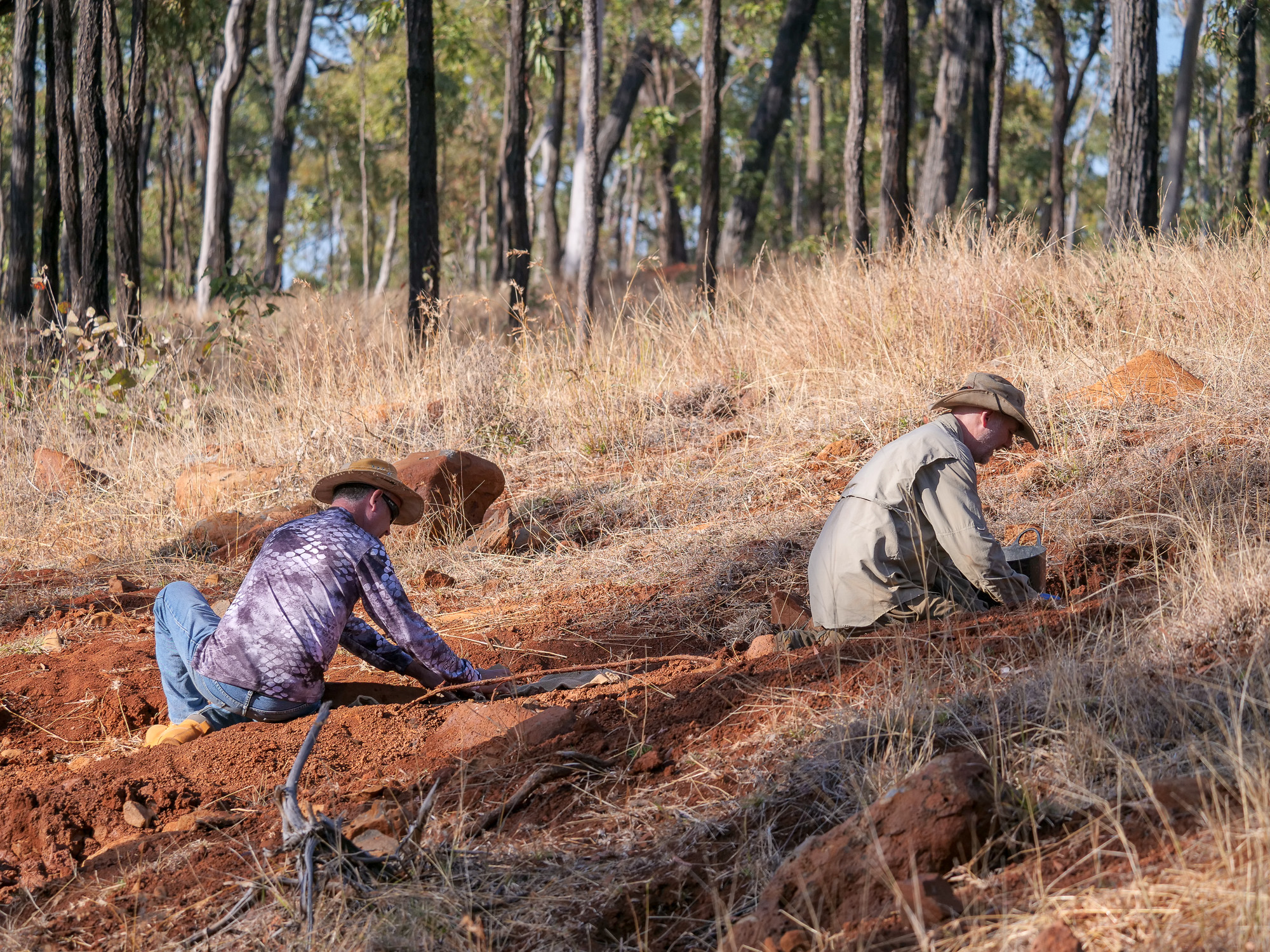
<< Photo credit: Jeff – Rod and I hunting Sapphires >>
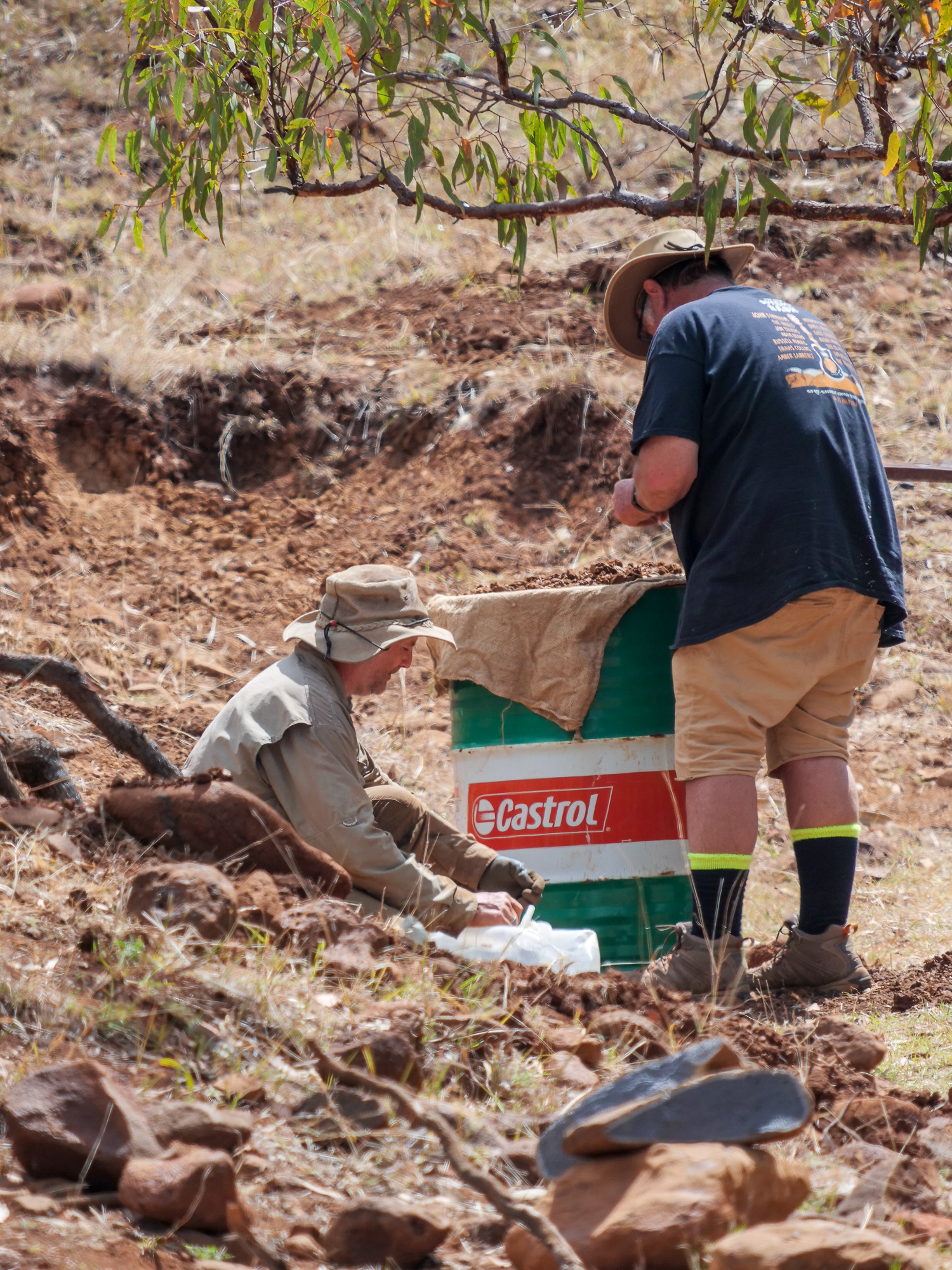
<< Photo credit: Rod – Me washing some rock which I hope will magically turn into Sapphires, whilst BJ sorts through more rocks >>
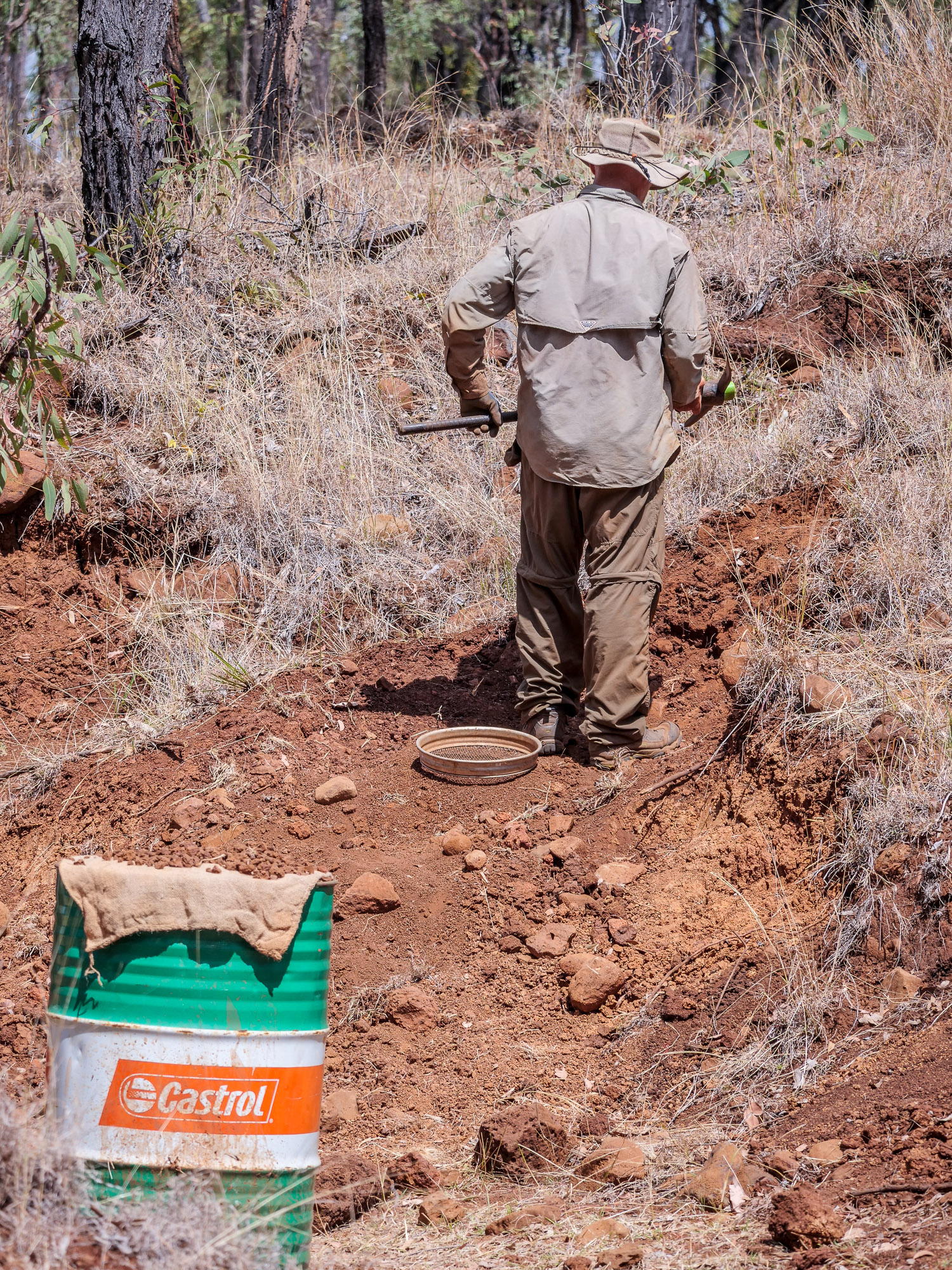
<< Photo credit: Rod – Me contemplating where to dig next >>
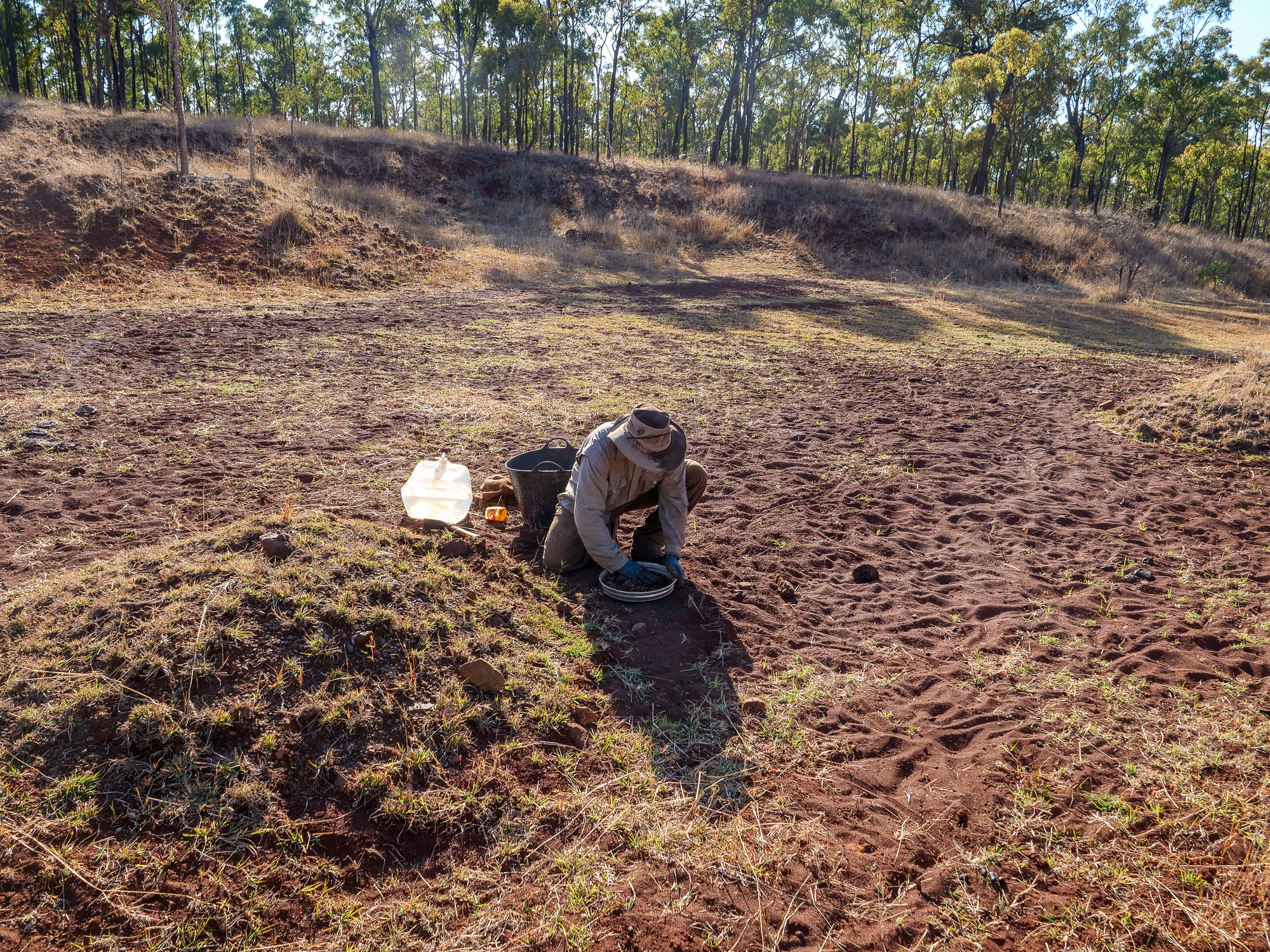
<< Photo credit: Rod – Me having a quick fossick in the Northern Gully on Mine Hill. Whilst this area probably looks like a large creek bed, it’s actually as a result of the commercial mining that’s dug down a couple or metres across the whole area, looking for Sapphire. >>
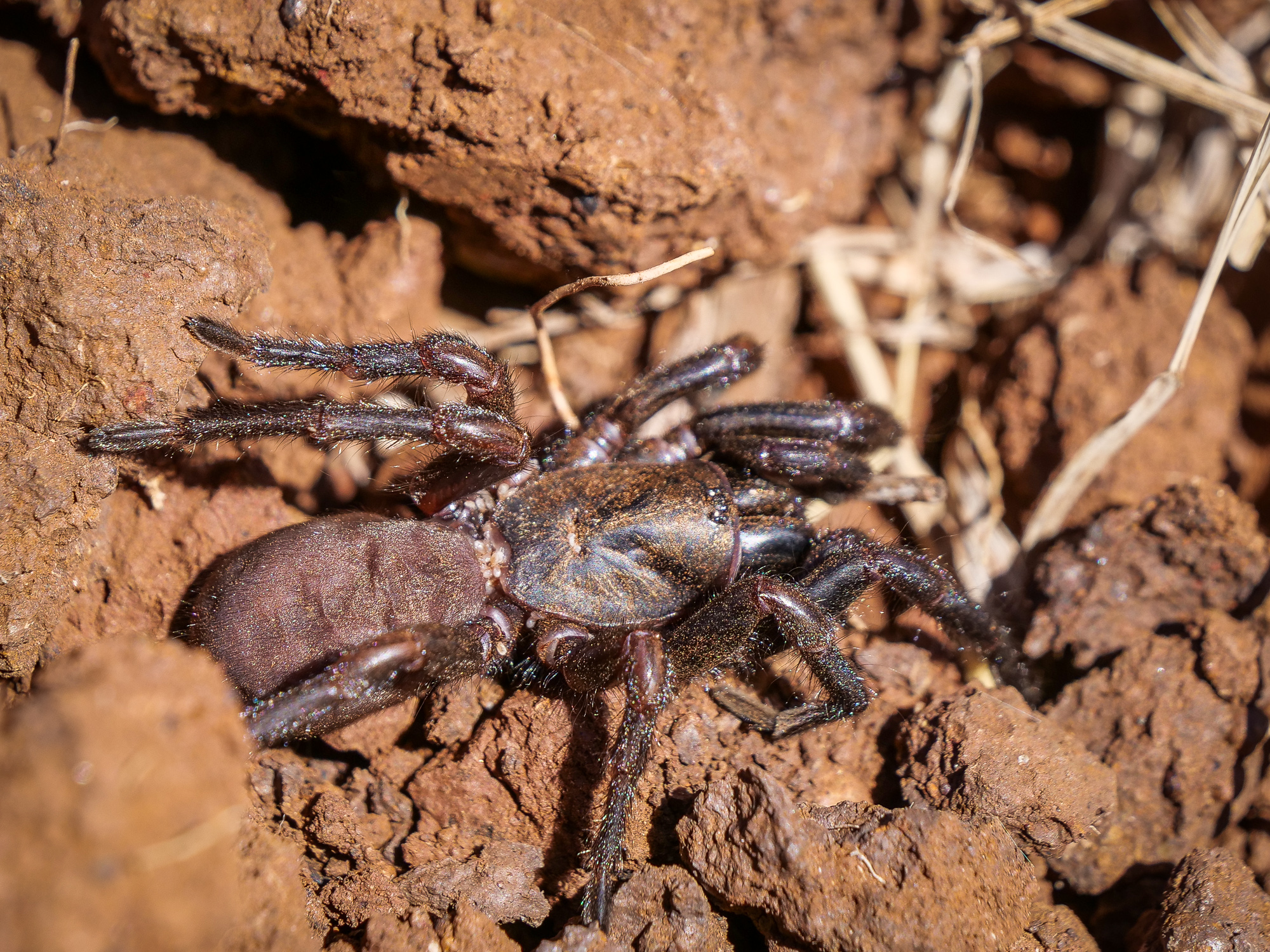
<< Photo credit: Rod – A largish, say 60mm long, Trapdoor Spider which was making its way towards where I was sitting whilst fossicking. If it had of managed to get a bit closer unseen, I reckon you would have been able to find some rather strange, brownish, gems in my jocks… >>
Next we tried our hand at finding Topaz at the Mt Gibson fossicking area, about 7kms East of Innot Hot Springs, approximately 70kms north of Pinnarendi. In the creek at Innot, geo-thermally heated water rises to the surface to come out near the bridge at about 75C. The local caravan park siphons this hot water off in to a series of swimming pools, but we just had a splash in the cooler sections after our fossicking. The geothermal activity gives credence as to why there’s so much mineral and gem action going on in far north Queensland. Anyway, I digress, to get to the fossicking area, you follow what starts out to be a rather gentle gravel road, out towards Mt Gibson. This track gets increasingly rough, before turning into a full blown 4wd goat track up the side of Mt Gibson. Jules and I, in Gary our Prado, managed to make it to within 400mtrs of the fossicking area, but Rod and BJ in Rod’s Pajero chickened out at a rocky section, which to his defense was pretty bloody rough and we were risking a hole in the diff if we got our tyre positioning wrong on the way through. In hindsight, I think he made the appropriate call as it was a bit hairy when Jules and I came back down, but with Rod’s expert tyre positioning guidance we made it down safe.
Anyways I digress again, so back to the fossicking. On the steep-ish sides of Mt Gibson, there’s a bunch of old diggings at a spot known as Glittering Star. Previous fortune hunters have dug out the sandy gravel from between large rocks and under the tree roots looking for gems. We followed their lead, extending old holes back into the hill and soon started finding clear stones that we thought were either the clearest Quartz Crystals you’ve ever seen, or our prey, the elusive Topaz. Not sure which it was, or even if they were meant to look like this, we kept everything that looked interesting and ploughed on, doing a bunch of excavation and sieving, soon turning up some stones that were ultra-ultra-clear and squarish, which we think is more indicative of Topaz. We collected the lot and upon further investigation back at camp, I’m pretty sure we have at least a dozen bits of small Topaz, with a bunch of nice clear Quartz. When I get back home I’ll do some more research and testing to determine what we’ve actually dug up. I’m hoping a couple of the Topaz looking suspects are cuttable so we’ll send them away to see what comes back.

<< Photo credit: Jules – The view out from our fosscking area on Mt Gibson >>
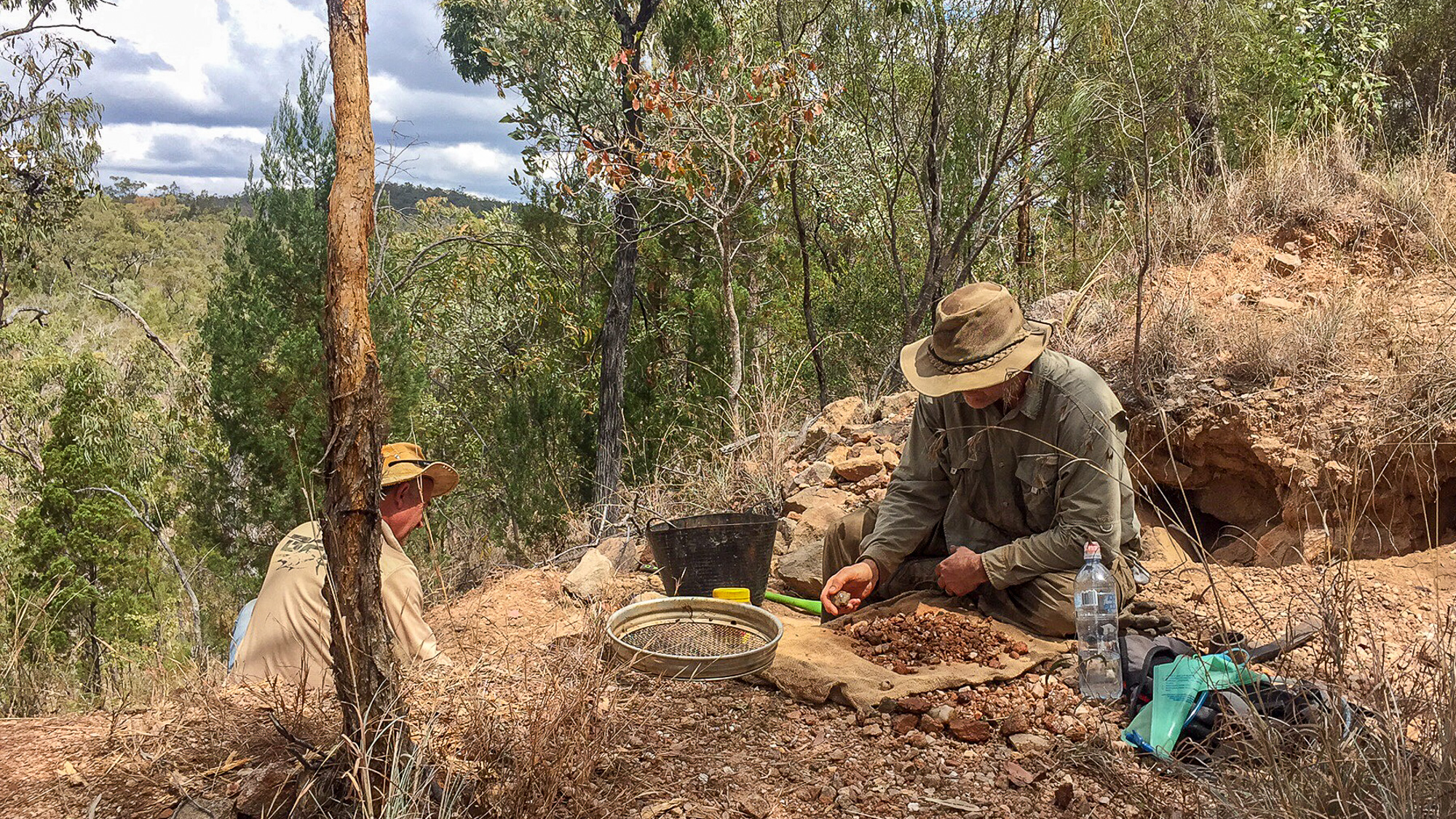
<< Photo credit: Jules – Rod and I hunting Topaz >>
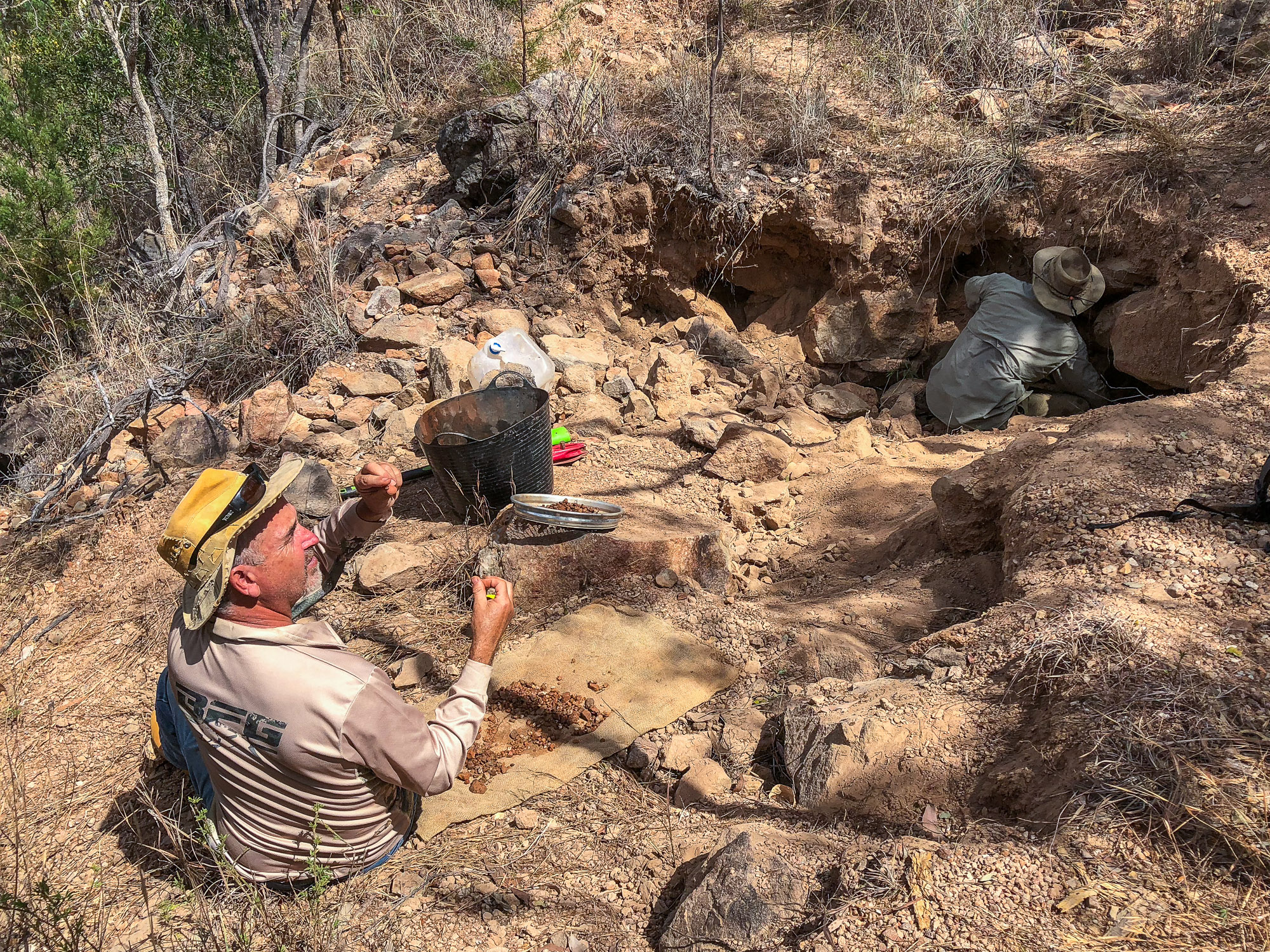
<< Photo credit: Jeff – Rod inspecting a rock and me extracting more dirt to sieve from under the rocks >>
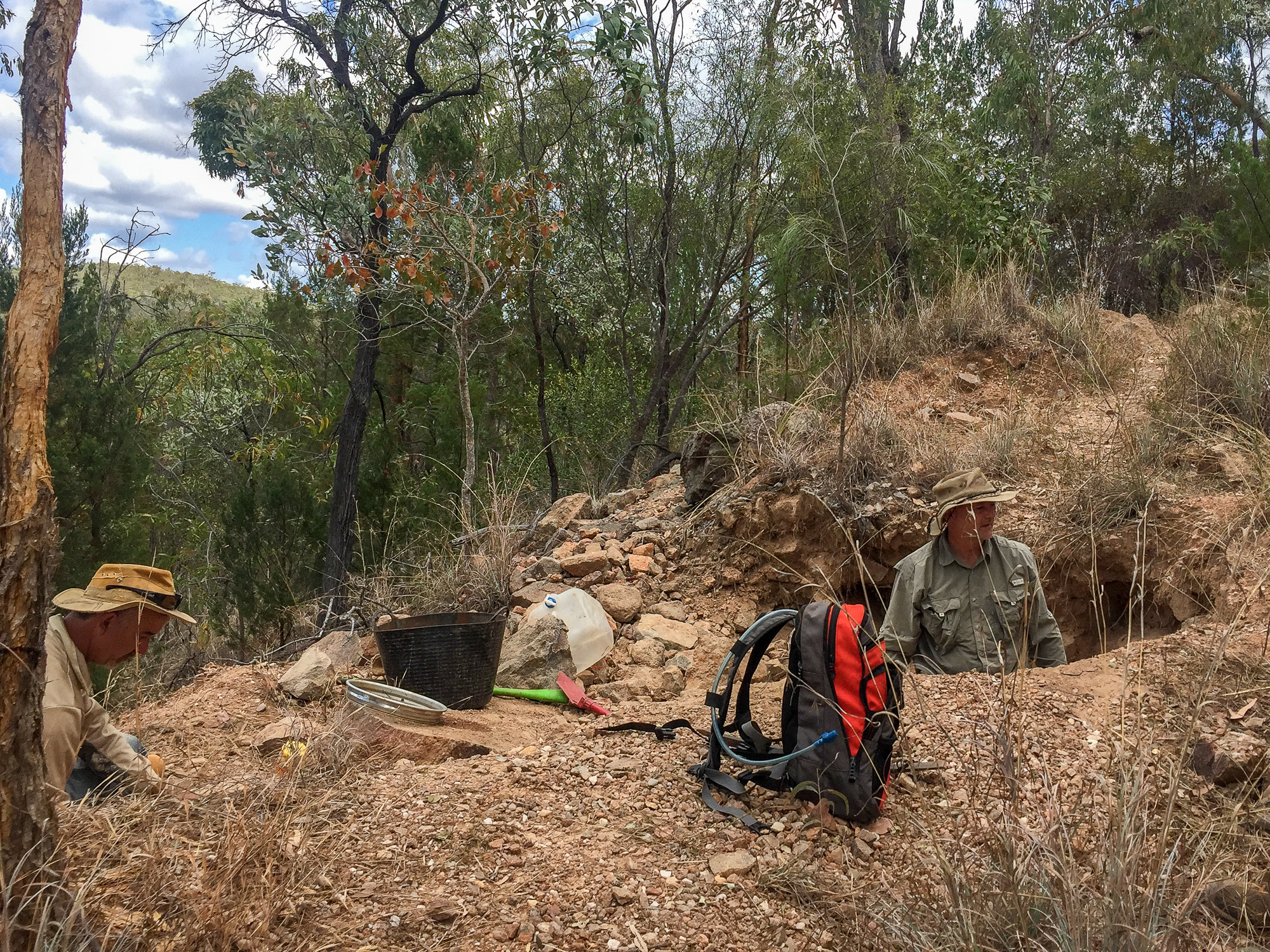
<< Photo credit: Jules – Rod still sorting rocks and me in a deep hole >>
Tomorrow, Monday 27th Aug, we’re making our short way up the road to Millaa Millaa for a couple of nights, where we plan to do the Waterfall Circuit, before moving on into Cairns mid-week. More on these locations later.
All semi precious/precious stones accepted but hold on the trapdoors.
You’ll be lucky David, they’re pretty small and I doubt we have many/any cutters, but I’ll keep you in mind..
Thanks for the trip in Memory Lane, I lived at Innot Hot Springs for six years way back in the dim and distant past. My girls were both born there. We played volleyball in the creek most weekends, and also fossicked in the Mt Surprise area
Didn’t know that. Nice to share some history and memories. Not much water in the creek but what was coming up was way too hot to swim in..